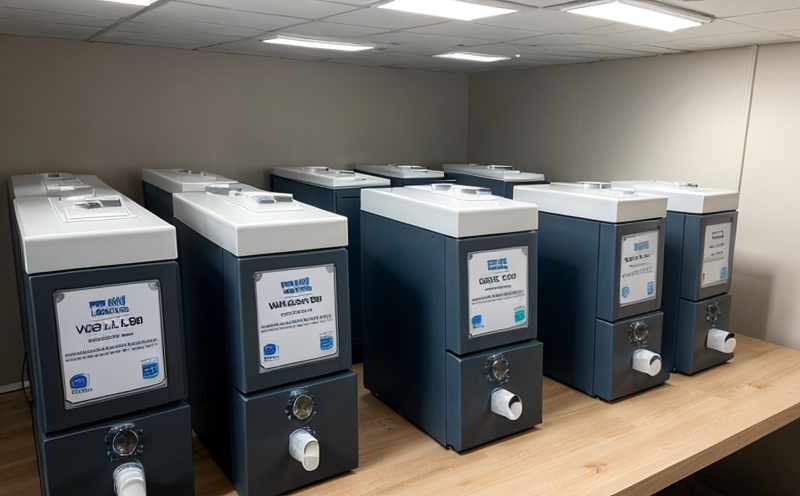ASTM D5116 VOC emissions from indoor materials Small chamber method
The ASTM D5116 test procedure is a widely recognized standard for measuring volatile organic compound (VOC) emissions from indoor building and construction materials using the small chamber method. This testing protocol is particularly crucial in ensuring compliance with various indoor air quality standards that are designed to protect human health.
This service addresses the emission of VOCs, which can be hazardous when present at high concentrations indoors. Common sources of VOCs include adhesives, paints, lacquers, and other coatings used in construction and finishing projects. The test measures the rate of release of these compounds into the air over a specified period.
The small chamber method involves placing samples within a sealed chamber, where controlled conditions simulate real-world exposure scenarios. This approach is particularly useful for predicting potential long-term effects on indoor air quality. The procedure is outlined in ASTM D5116 and is applicable to various materials including but not limited to wallboard, floor coverings, insulation, paints, varnishes, and stains.
The testing process begins with the preparation of the specimen, which must be cut into small pieces that fit within the chamber. The specimens are then placed inside a sealed chamber along with a flow meter for air flow measurement. The chamber is maintained at specific conditions such as temperature and relative humidity to simulate typical indoor environments.
Once the test begins, continuous air sampling is conducted over a period of 96 hours or more depending on the material type. The samples are analyzed using gas chromatography techniques to quantify the VOCs present in the chamber's air. The results provide a clear picture of the emissions potential of each material.
The ASTM D5116 standard specifies the use of an adsorbent tube as part of the sampling process. This method ensures accurate measurement of low levels of VOC emissions, which is critical for compliance with stringent indoor air quality regulations like those found in LEED (Leadership in Energy and Environmental Design) certification programs.
Understanding the emission characteristics of materials is essential for architects, engineers, and interior designers to make informed decisions about material selection. This testing service helps ensure that the products used meet not only regulatory requirements but also exceed them, contributing to healthier indoor environments.
| Applied Standards |
|---|
| - ASTM D5116: Standard Test Method for Determining Volatile Organic Compound Emissions from Indoor Building and Construction Materials Using Small Chamber Testing |
Applied Standards
The ASTM D5116 standard is the primary reference for this testing service. It provides detailed procedures and requirements to ensure accurate measurement of VOC emissions from indoor materials. The standard specifies the use of a small chamber, the duration of the test, sampling techniques, and the methods for analyzing the collected samples.
Benefits
The ASTM D5116 VOC emissions testing service offers numerous benefits to clients involved in the design, construction, and renovation of buildings. By ensuring compliance with regulatory standards such as those set by LEED and other green building initiatives, this service helps protect human health and well-being.
- Ensures compliance with indoor air quality regulations
- Reduces risk of liability related to poor indoor air quality
- Promotes the use of environmentally friendly materials
- Supports sustainable design practices in commercial and residential projects
The results from this testing can also be used for marketing purposes, helping companies differentiate themselves by offering healthier products. Additionally, it aids in meeting certification requirements like LEED, which is highly valued among eco-conscious consumers.
Competitive Advantage and Market Impact
- Leadership in compliance with stringent VOC emission standards
- Differentiation through the provision of high-quality testing data
- Support for sustainable building practices that enhance marketability
- Promotion of healthier indoor environments, which is increasingly important to consumers
The ASTM D5116 service provides a competitive edge by ensuring products meet or exceed regulatory requirements. This not only reduces legal risks but also enhances the reputation of the company in the eyes of clients and stakeholders.





